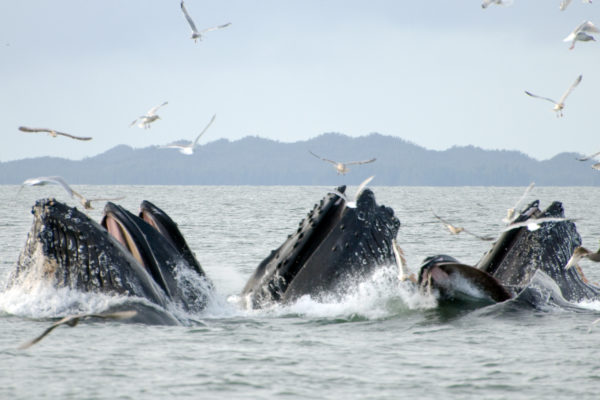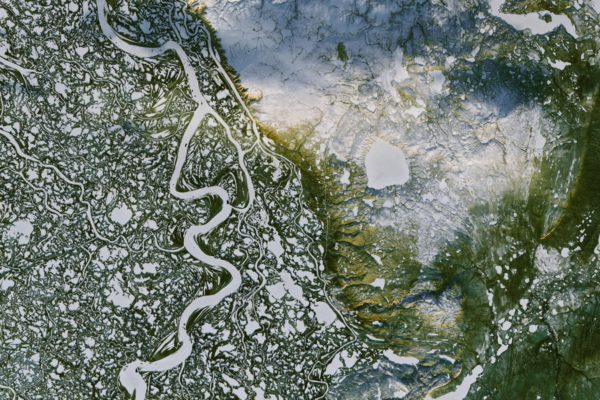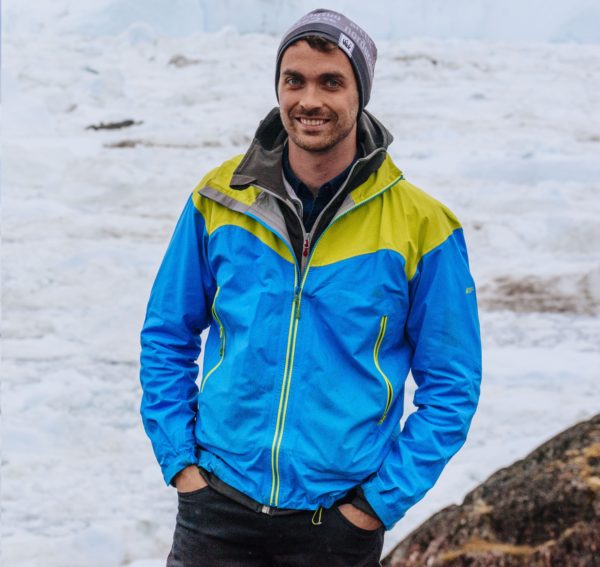Fieldnotes: What do AI and blockchain have to do with nature?
Fieldnotes is WWF-Canada’s newsletter about our science-based work finding solutions in the face of an unprecedented crisis in climate change and wildlife loss.
When machine learning met marine mammals

Climate change, pollution and habitat loss are putting pressure on our planet like never before. Many of our most successful technological advancements have unintentionally contributed to these problems.
But now technology is also increasingly helping us solve them.
Tools like drones and AI (artificial intelligence) have already become an indispensable part of conservation work by enhancing data collection and analysis. We see examples of these benefits ourselves in WWF-Canada’s work in northern B.C.’s Squally Channel, one of the most important whale habitats in the region.
Four strategically placed underwater hydrophones monitor 200 sq.km of ocean, capturing the calls, clicks and moans of orca, humpback and fin whales. These recordings are transmitted by radio in real time to a field station on nearby Fin Island. This acoustic data is then used to pick out whales, triangulate their location, determine their numbers, track their movement in the channel and, ultimately, minimize risks from marine vessels.
“To reduce the impact of shipping on marine mammals, we need to be able to monitor these whales and how they use their habitat in real time,” says Hussein Alidina, Lead Specialist for Ocean Conservation.
That’s why WWF-Canada partnered with the Gitga’at First Nation and North Coast Cetacean Society to launch a multi-year project called SWAG (Ships, Whales, Acoustics in Gitga’at Territory). Today, fewer than 50 to 60 large commercial vessels navigate through the Gitga’at First Nation Territory each year. With the construction of a natural gas terminal underway, vessels will increase to 350 annually and could go as high as 750. The change to this prime whale habitat will be profound.
Machine learning plays a key role in this project as the AI software uses an audio library of whale sounds to learn how to identify species as well as distinguish between feeding, socializing and other calls. This SWAG data will help the Gitga’at Nation, government agencies and industry implement smart management measures to protect whales and limit the impacts of marine shipping. And as technology continues to evolve, it will increasingly provide new insights into conservation practices and help shape a future where wildlife can live in harmony with people.
Enter the Generation Water Tech Challenge
Safeguarding Canada’s watersheds is one of the greatest challenges of our time because of mounting population pressures like increasing demands for food and energy, urbanization and climate change. So, WWF-Canada has launched the Generation Water Tech Challenge to see if you can help us improve Canada’s freshwater health.
Our 2017 Watershed Report identified two priority problems — high threats to urban watersheds and a data deficit across the country — and WWF-Canada is looking for innovative, technology-based solutions. The five award recipients will each receive a $15,000 grant for their freshwater project as well as a spot in the Earth Tech accelerator run by the Centre of Social Innovation’s Climate Ventures incubator.
Learn more about this amazing opportunity on our exciting new Living Planet Technology Hub.
Q&A: How technology brings conservation to new heights

Technology is transforming environmental work in Canada and around the world. We spoke with James Snider, our VP of Science, Research and Innovation, about the present and future of high-tech conservation.
How can technology help protect the environment?
Every day, we’re learning new things about nature and wildlife thanks to these tools. Camera traps, drones, satellites —these technologies can reach places that were previously too difficult to reach, either due to logistical, technical or financial reasons. They are providing new insights on species behavior and ecology with minimal disturbance. By filling in crucial gaps in our understanding, this new knowledge can help shape future conservation decisions and protect wildlife across the country.
Why is technology important to WWF’s current conservation work?
Technology can help tell us where our conservation actions are most needed. Take Canada’s freshwater ecosystems, which our Watershed Reports have shown have major gaps in our knowledge of their condition.
Now through the combination of the power of citizen science and eDNA technology, we’re ensuring faster and more accurate understanding of the health of our river. With blockchain technologies, we’re ensuring secure access to data so people, communities, and Government can make place-based and evidence-based decisions for nature and communities.
How do you think technology will help fight the dual crises of climate change and biodiversity loss?
As our conservation efforts increasingly need to deliver benefits for wildlife while also reducing carbon emissions, we will need new and emerging technologies to help inform where our conservation actions are most needed. WWF-Canada’s recent nationwide assessment pairs that knowledge with gaps in essential wildlife habitat protection to map out how we can make the greatest impact on protecting biodiversity and slowing climate change.
Our new carbon mapping project with researchers at McMaster University uses satellite imagery and Artificial Intelligence to identify and map Canada’s hotspots of stored carbon.
Meet a… Scientist!
Brandon Laforest – Senior Specialist, Arctic Species & Ecosystems
Brandon leads our Arctic wildlife work and oversees the Arctic Species Conservation Fund. These WWF-funded research projects often pair traditional knowledge with emerging technologies like satellite telemetry and drones to provide unprecedented observations about species like caribou and narwhal.
“Drones have become increasingly popular among conservation practitioners because of their ability to capture never-before seen behaviours and movements of species. Drone technology complements Inuit knowledge by providing new insight on species. Those insights can be used to determine protected areas and establish shipping lanes that reduce whale interference.”




